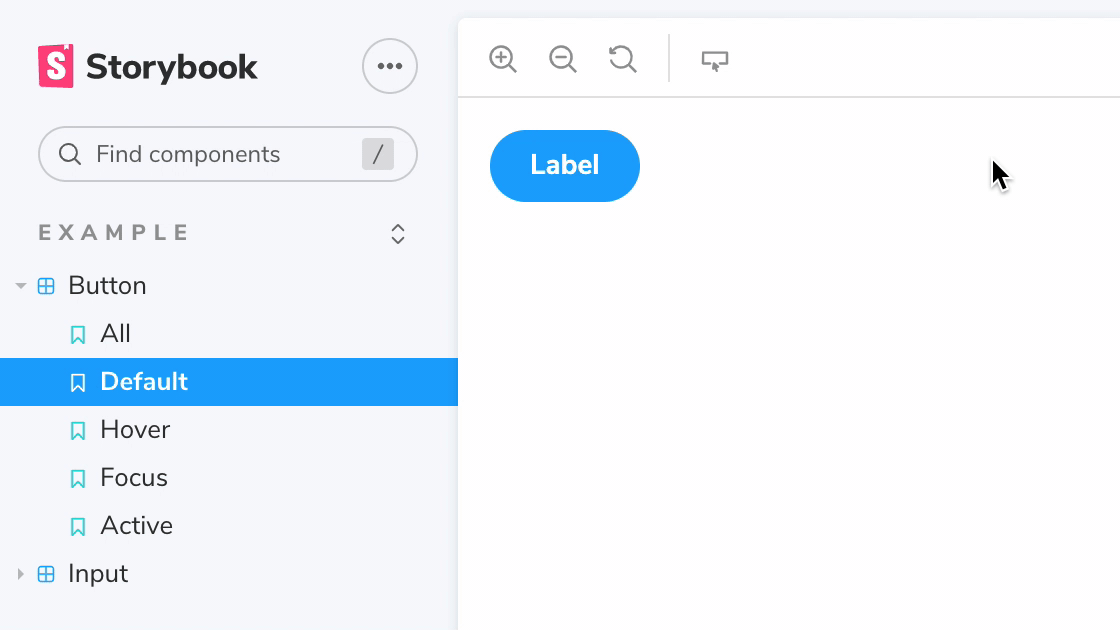Toggle CSS pseudo states for your components in Storybook.
This addon attempts to "force" your components' pseudo states. It rewrites all document stylesheets to add a class name selector to any rules that target a pseudo-class (:hover, :focus, etc.). The tool then allows you to toggle these class names on the story container (#root) or any other root element you want (via the rootSelector param). Additionally, you can set the pseudo property on your story parameters to set a default value for each pseudo class. This makes it possible to test such states with Chromatic.
Because this addon rewrites your stylesheets rather than toggle the actual browser behavior like DevTools does, it won't render any of the default user agent (browser) styles. Unfortunately there's no JavaScript API to toggle real pseudo states without using a browser extension.
To install the addon:
npx storybook add storybook-addon-pseudo-statesFor Storybook versions before 9.0, use v4.0.3 of the addon:
npx storybook add storybook-addon-pseudo-states@4.0.3You can have your stories automatically use a specific set of pseudo states, by setting the pseudo property on parameters:
export const Hover = () => <Button>Label</Button>;
Hover.parameters = { pseudo: { hover: true } };This is what enables snapshot testing your pseudo states in Chromatic.
If you don't want to force or toggle pseudo styles to all elements that use them, but rather only enable them on specific elements, you can set a string or array value instead of a boolean:
export const Buttons = () => (
<>
<Button id="one">Hover</Button>
<Button id="two">Hover focus</Button>
<Button id="three">Hover focus active</Button>
</>
);
Buttons.parameters = {
pseudo: {
hover: ['#one', '#two', '#three'],
focus: ['#two', '#three'],
active: '#three',
},
};This accepts a single CSS selector (string), or an array of CSS selectors on which to enable that pseudo style.
By default, we use #storybook-root (or #root before Storybook 7) element as the root element for all pseudo classes. If you need to render elements outside Storybook's root element, you can set parameters.pseudo.rootSelector to override it. This is convenient for portals, dialogs, tooltips, etc.
For example, consider a Dialog component that injects itself to the document's body node:
export const DialogButton = () => (
<Dialog>
<Button>Hover</Button>
</Dialog>
);
DialogButton.parameters = {
pseudo: { hover: true, rootSelector: 'body' },
};

